- Home
- Howard Marks
Senor Nice Page 5
Senor Nice Read online
Page 5
‘Caradoc is a direct ancestor of King Arthur and of Hywel Dda, who, despite being a nasty bit of work, first gave a system of law to Wales. Obviously, Joseph gave Caradoc a sip from the Holy Grail. Caradoc gave the same to his son, and so on until Hywel Dda. The Holy Grail is the same as the divine right of kings. That’s why Henry VII – Henry Tudor – bent over backwards to show he was descended from King Arthur, fulfilling Merlin’s prophecy that a Welsh king with the essence of Arthur would once again rule Britain.’
‘That can’t be right,’ I said. ‘If King Arthur had drunk from the Holy Grail, why did he send his knights out to find it? Did someone steal it?’
‘Actually, yes; Merlin did. Not only did he steal it, he also drank more than his fair share from it.’
‘Ah! I see.’
Something among all the madness made sense to me, but I didn’t know what it was. None of it made sense to Ivor.
‘Eddie, shut up for Christ’s sake. Even if anyone could understand you, they wouldn’t know what the hell you are on about.’
Four pints later, Marty and I left the pub to roll a skunk spliff in the shelter by the old railway line.
‘Marty, I want to take a strong dose of these mushrooms called Goddess Juice Grail Drops someone gave me last night. Can you be with me in case I go weird?’
‘Of course. An honour and a privilege.’
‘Unless you want to take some, too?’
‘No, thanks; I still haven’t recovered from that acid you gave me nearly forty years ago.’
We walked to the ‘ton’, the hill that distinguishes Kenfig Hill from nearby Kenfig. I ate the mushrooms and after about twenty minutes a stream of unconsciousness drowned me with profundity and madness. I started thinking of females and God and Merlin, Eddie Evans and Elvis, and the setting sun.
‘What the hell are you thinking about, Howard.’
‘Christianity, I suppose. And all that stuff Eddie Evans was talking about. Mad, isn’t he?’
‘Well much of what he says is true. The first Christian kingdom did happen around here, as did the Druid religion thousands of years earlier.’
‘I don’t know anything about the Druids, to be honest.’
‘Well, it was the first worldwide religion. Pythagoras, for example, was a Druid.’
‘Marty, are you saying the first religious person ever was Welsh?’
‘No, I’m not saying that. Seth, the third son of Adam after Cain and Abel, founded Druidism somewhere in Iraq. He used the name Gwyddon Ganhebon. Seth’s devotee, Hu Gadarn the Mighty, a contemporary of Abraham, brought Druidism to ancient Britain. There are loads of similarities between Druidism and Christianity.’
‘I thought Druids sacrificed virgins. Doesn’t sound too Christian to me.’
‘There’s plenty of sacrificing going on in the Bible, Howard. And don’t forget the Holy Trinity – the Druids had that idea, but to them it was simply the past, present and future. No Holy Ghost stuff. Druidism had its headquarters here for two thousand years. Going from Druidism to Christianity is not as traumatic as some people try to make out.’
‘But I read that the first Christian kingdom was Georgia, where red wine, Jesus’ favourite drink, was first produced. The Georgian alphabet is based on the stages of growth of the vine.’
‘Is Georgia anything to do with Saint George?’
‘Yes, he’s their patron saint as well.’
‘Well, there you go, Howard. Don’t forget the red dragon is the same as red wine from the true vine. St George killed the red dragon, a triumph of evil over good, of the English over the Welsh, and Merlin did say the Welsh would have their day. They probably just read books about it in Georgia when they got pissed; we Welsh experienced it.’
‘OK, Marty, thanks. Can we go back to the pub? I’m dehydrating and sweating.’
Again, not much had changed at the pub, although Eddie Evans was on the point of leaving.
‘It’s Howard and Marty back. You’ve been a while; I won’t ask what you’ve been up to. But here’s something interesting which I only found out today and forgot to tell you earlier: America was named after a Welshman.’
I felt confident enough to contradict: ‘You’re wrong there, Eddie. America was named after Amerigo Vespucci.’
‘Oh really! Have you heard of Richard Americ?’
‘No, I can’t say I have, Eddie.’
‘I’ll leave you to research that one, Oxford boy.’
The mushrooms, the beer, the skunk, last night’s cocaine hangover and today’s overdose of information had left me exhausted. Marty and I went to our separate Kenfig Hill homes. Sleeping was difficult – too many images of pirates, kings, rock singers, angels, mistletoe and wizards. I gave up, switched on my laptop, went online, and searched for websites referring to Richard Americ.
I discovered that Italian mariner Giovanni Caboto (John Cabot) had visited Bristol to meet wealthy merchants willing to fund a voyage of discovery to the west. Henry VII had given Caboto authority to claim lands on his behalf. Richard Americ, King’s Customs Officer and Sheriff of Bristol, provided most of the finance on condition that any land claimed would carry his name. Americ was born in Wales, and his name is derived from the Welsh ap Meuric (son of Maurice). Caboto set out and made landfall five weeks after leaving England. On his return with proof of a new world, America, Henry VII gave Caboto a bigger fleet of ships to exploit his discovery. As a result of the meanderings of their own Italian mariner Christopher Colombus, the Spanish had other ideas about who discovered America. On hearing of Caboto’s voyage and the naming of America, the Spanish sent the notorious pirate Hojeda to sink Caboto’s fleet. One of Hojedas’s crew was another Italian, Amerigo Vespucci. Caboto’s fleet never returned.
Still surfing, I found the Americ family coat of arms: it was the stars and stripes. I needed no further proof. America was named after a Welshman, and the United States flag was derived from his coat of arms. Why was this not commonly known? Was this further evidence in support of Marty’s favourite hobby horse – the suppression of all things Welsh by the English?
I rummaged around the attic again. Dozens of boxes contained belongings of mine from days gone by – old school textbooks, chemistry and Meccano sets, unopened wedding presents from my 1967 marriage to Ilze, psychedelic rock posters, hundreds of letters and reams of pretentious philosophical ramblings from the days when I thought my only possible career was as an academic. One box was from Terre Haute Penitentiary. It had lain unopened since 1995 and contained all the photographs, books and letters sent to me during my years as a prisoner and which the authorities had judged detrimental to maintaining good order in the prison. One was a photograph of my son Patrick aged two taking his first swim. It hadn’t been allowed to get through because he wasn’t wearing a swimming costume. There were several inoffensive books on drugs, crime, sex and politics, computer magazines and various articles on subjects ranging from racism in America to the Super Furry Animals. American prisons take no chances. Some books contained dedications to me handwritten by the authors. These were automatically banned; books had to be sent to the prison in virgin condition direct from the publishers. My attention was drawn to a book entitled Madoc – The Legend of the Welsh Discovery of America. The author, Gwyn A. Williams, had signed a copy for me. An envelope of articles and pamphlets on the same subject peeped out from inside the book. I settled down to read, highlighting and scribbling frantically.
Prince Madoc, the illegitimate son of Welsh king Owain the Great, had become disillusioned with royal life. In 1170 he and some of his friends set sail from Abergele, currently a small village and large caravan park near Colwyn Bay, and landed in Alabama. Both Abergele and Mobile, Alabama have plaques to Madoc’s memory. Leaving behind a small group, Madoc returned to Wales with tales of the warm, luscious land he had found. He picked up supplies and more ships full of like-minded fellow countrymen and was never seen again.
Advisers to Henry Tudor’s granddaughter, Elizabeth I, us
ed the tale of Madoc to assert British sovereignty over American territory already claimed by Spain. The house of Tudor was proud of its Welsh roots and had ample evidence to argue its case. Explorers, including Sir Walter Raleigh, had written about a tribe of Native Americans who spoke Welsh. In 1669 the Reverend Morgan Jones of Jesus College, Oxford and a party of five were taken prisoner by Native Americans. One of the tribe heard Reverend Jones praying in Welsh, whereupon the men were released unharmed by the braves, who claimed descent from Madoc. Around a hundred years later French fur trader Jacques d’Eglise found a tribe of Native Americans who lived in beehive-shaped lodges similar to those found in Wales and fished in round skin and wickerwork boats exactly like Welsh coracles. Clerics, traders, missionaries and anthropologists such as George Catlin all came into contact with the tribe, who referred to themselves as the Madogwys – men of Madoc. In 1782 Oconosto, chief of the Cherokee nation, stated that a series of pre-Columbian forts on the shores of the Alabama River were built by ‘a people called Welsh and they had crossed the Great Water’. Chief Oconosto called their leader Madoc. Archaeological research has shown that one of the forts was identical in setting, layout and method of construction to Dolwyddelan Castle in Gwynedd, the still-standing birthplace of Prince Madoc.
One pamphlet claimed that Madoc, on his second visit, landed and settled in Mexico; there were several Welsh words in the Aztec language. One of these was the name of a strange new bird, the penguin, Welsh for ‘white head’ (pen gwyn). At this point I took a break from my research to smoke a spliff. I thought of penguins and realised they had black heads. My heart fell. I had been reading a complete load of bollocks. I drifted asleep, weary and depressed.
I woke up with a crystal-clear mind. The penguin problem had provoked doubts about the existence of Welsh Native Americans but the rest made perfect sense. Back online, I searched for ‘white-headed penguins’ and came across the great auk (Pinguinus impennis), a big, northern hemisphere penguin with a white patch on its head. Great auks, extinct for over 150 years, had lived in great numbers on islands off Britain, Iceland and Greenland and were sources of food and down, especially for mariners crossing the Atlantic. Almost all seabirds had black heads, so the great auk could be distinguished by its white patch. When Welsh settlers came across southern hemisphere penguins, the striking similarity in shape between these and great auks resulted in the name penguin being used for both. I felt relieved. Until this moment I had been inclined to dismiss Great-Aunt Afon Wen’s story of Welsh Red Indians as a flight of fancy, possibly her own, but here it was confirmed in works of scholarship. Could she also have been right about the Incas? That would just be too much to take. Within minutes, I was back in the attic.
In 1908 the Reverend John H. Parry of the University of Durham published Manco Capac the First Inca of Peru, Being a Critical Inquiry into the Pretensions concerning the Discovery of America by Prince Madawg Ap Owen Gwynedd with Reflections upon the Final Discovery of that Continent by Christopher Columbus; and upon some of the Historical Antiquities of America, which argued that Madoc became known as Manco Capac. Accompanied by Mama Ocello (a corruption of Mama Uchel – ‘High Mother’), Manco Capac had arrived on the shores of Peru a few weeks after Madoc’s disappearance from Wales. The couple are the progenitors of the Incas. The natives saw them as children of the sun because they had come from the east. Manco Capac became a leader, set up a dynasty and taught the natives to live in houses, cultivate trees and plants, and rear flocks of animals. He made Cuzco the capital of Peru and reigned there for forty years before heading south down the Andes and disappearing. He brought a lot with him: he developed structures of authority and justice remarkably similar to those of Hywel Dda in Wales. Elements of Christianity were present in the Incas’ worship of the sun. Words and place names were similar to those used by Welsh Druids.
There was a knock on the door. It was Marty. ‘I’ve got the car for a couple of days if you fancy a bit of an excursion.’
Three
THE CARIBBEAN
‘Please come this way, ladies and gentlemen. On the walls of this magnificent dining room are portraits of Morgan family members. As you can see, scattered around the room are various bits of china and silver, some of which are extremely valuable. That Elizabethan salt cellar, for example, is worth almost twenty thousand pounds. These chairs are worth—’
‘Who is that in the picture by the door?’ interrupted Marty.
‘Ah! That’s the black sheep of the family, Henry Morgan the pirate. We try not to mention him. He did disgrace the family quite a bit.’
Marty and I and various tourists were on a guided tour of Tredegar House, a mansion just off the main Cardiff–Newport road and former home of the Morgans, one of the greatest of Welsh families. We were on our way to Cwmaman, from where the Stereophonics hail, and the current home of Bernie Davies, a senior member of both the Valley Commandos and of the Firm, Britain’s largest criminal organisation. I had last seen Bernie at the Glastonbury Festival, where he had expressed interest in my doing a show at the Cwmaman Institute. I had agreed to visit him the next time I was in Wales.
‘He looks a bit like you, Howard. Don’t you think so?’
‘Who, Marty?’
‘Henry Morgan, of course. Look at his eyes and his mouth. Exactly like yours.’
I could vaguely see what Marty meant, but the portrait was of a teenager.
‘Excuse me,’ said Marty to the woman guide, ‘but he was a bit more than just a pirate, wasn’t he? I mean he was governor of Jamaica. Let’s be fair.’
‘Deputy governor only, I think. And he got sacked. And he was imprisoned in the Tower of London for his crimes against king and country. Henry Morgan was a very cruel man. He was a murderer, a drinker, a womaniser and a thief. I don’t know why they keep his picture here. If I had my way, it would be thrown away. And he was probably born out of wedlock. The family has had to endure shame for centuries because of Henry Morgan’s evil ways and mad behaviour.’
‘But he was knighted,’ protested Marty, ‘and made Sir Henry Morgan.’
‘Well, things were different in the seventeenth century, weren’t they? All sorts of scallywags were made knights. Anyway, let’s not dwell on him, please. On the right there’s a picture of Evan Morgan, the last of the family to live here in Tredegar House. Now he was a real character. He would frolic naked in the pool here at weekends with his three best friends, who were none other than H.G. Wells, Aldous Huxley and George Bernard Shaw. He filled the place with wild animals, including an anteater and a boxing kangaroo called Somerset. His mother was even more of an eccentric. She built bigger and bigger bird’s nests in the house and ended up living in one of them.’
Marty wasn’t about to let the guide get off so easily. ‘Was Henry Morgan born in this house, then? I suppose he must have been if his portrait is here.’
‘He certainly was not born here,’ answered the guide indignantly.
One of the tour party, an American, suddenly developed an interest in the pirate. ‘Where was he born? My name is Morgan. I might well be one of his descendants. I’ve been told my ancestors were Welsh.’
‘There’s no chance of that, sir, I’m afraid. Henry Morgan had no children, thank God. But if you want to see where he was born, go to Llanrhumney Hall outside Cardiff. You’ll have no problem believing he was born there, I can promise you; it’s probably the roughest part of Wales. As you are interested, I should add that a BBC Wales team recently went there and decided that he wasn’t born there but somewhere up in the valleys. I think it was in Blackwood. I can’t see why it matters myself.’
Blackwood was near Cwmaman. Perhaps Bernie Davies would know about this.
In twenty minutes the disappointing tour came to its end. Marty and I decided to visit Henry Morgan’s supposed birthplace at Llanrhumney Hall, less than ten miles away. We drove from Tredegar House towards Cardiff on the A48 and came to what we thought was Llanrhumney, but there was no evidence of the name on any ne
wsagent’s, pub or post office. Crawling down a hill towards the centre of Cardiff, I noticed a pub called Morgan’s. This couldn’t be a coincidence. A notice signalled the pub was open all day and served good food, so we parked and walked to the door. It was closed. We knocked hard for several minutes. A large dog ambled up, placed its front paws on the door, and barked repeatedly. Eventually, a young man in slippers and a chef’s apron unlocked the door. He yelled at the dog, threatening to kick it, and stared at me and Marty as if we were a couple of bailiffs.
‘We’re closed, I’m sorry.’
‘Closed?’ protested Marty. ‘How can somewhere advertising hot food all day be closed at lunchtime? We don’t want much. A sandwich will do.’
‘Like I said, I’m sorry. We would like to open, but we just can’t get the staff these days.’
‘Can you tell us where Llanrhumney Hall is?’ I asked.
‘That much I can do for you. Drive back out of here and turn left into the main road. When you come to the Cross Inn, turn left. That’s Llanrhumney Avenue. Then turn left into Ball Road and keep going. You can’t miss it.’
We followed the landlord’s directions and found ourselves in the middle of an inhospitable housing estate. Truanting schoolchildren stared at us menacingly from gardens full of refuse. Most of the homes appeared to have been converted into crack houses.
‘I don’t believe this, Marty,’ I said. ‘That landlord must have been winding us up. There’s not going to be a stately home in the middle of this lot.’
I wound down the window. ‘Where’s Llanrhumney Hall?’ I asked one of the school skivers.
‘You don’t want to go there; it’s haunted.’
‘All the better. Where is it?’
‘Just keep going.’
‘Thanks. By the way, who’s it haunted by?’
‘Henry Morgan.’
This was encouraging. ‘Oh yeah,’ I said. ‘Who was he then?’

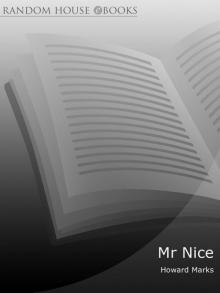 Mr Nice
Mr Nice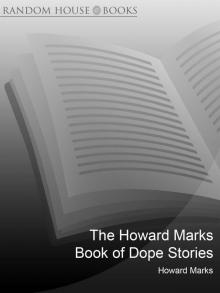 The Howard Marks Book of Dope Stories
The Howard Marks Book of Dope Stories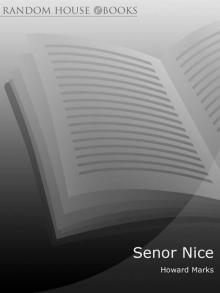 Senor Nice: Straight Life From Wales to South America
Senor Nice: Straight Life From Wales to South America The Score
The Score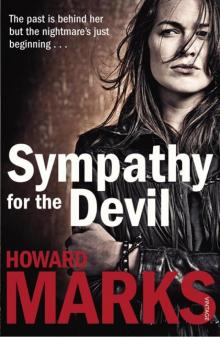 Sympathy for the Devil
Sympathy for the Devil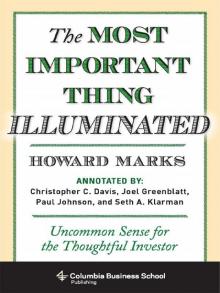 The Most Important Thing Illuminated
The Most Important Thing Illuminated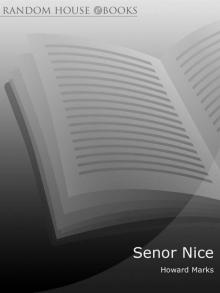 Senor Nice
Senor Nice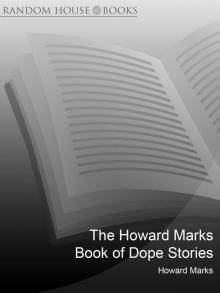 Howard Marks' Book of Dope Stories
Howard Marks' Book of Dope Stories